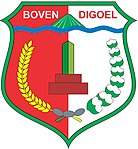This is a list of emblems or coat of arms used in Indonesia. Indonesia is divided into 38 provinces, and each province is divided into regencies (kabupaten) and cities (kota). There are 416 regencies and 98 cities. Each province, regency, and city has its own emblem.
Many of the emblems incorporate rice and cotton (for prosperity and the fifth principle of Pancasila, a remnant from socialist heraldry popular during the guided democracy era); symbols marking Pancasila in entirety; as well as symbols marking the date Indonesia declared its independence, 17 August 1945.
National
| Coat of arms | Name | Description |
|---|---|---|
 |
Coat of arms of Indonesia | The supporter of Indonesian national emblem is the Garuda, a mythical bird from both Hindu and Buddhist mythology that invokes the pre-colonial Hindu and Buddhist kingdoms in the archipelago. Unlike most depictions of Garuda with anthropomorphic features, this emblem is modelled after the national bird, the Javan hawk-eagle recognizable for its crest. The Garuda symbolises strength and power, while the gold colour symbolises greatness and glory.
The feathers on the Garuda of the Indonesian coat of arms are arranged so that they invoke the date of 17 August 1945, the date of the independence proclamation: there are 17 on each wing, 8 on the tail, 19 below the shield, and 45 on the neck. The Garuda clutches a scroll in its talons bearing the national motto "Bhinneka Tunggal Ika", an Old Javanese quote from 14th-century poem from the Javanese Majapahit Empire, which means "Unity in Diversity". |
 |
The Pancasila shield | The Garuda has an escutcheon or heraldic shield on its chest with five symbols. The shield is coloured red and white like the Indonesian flag and has thick black lines running horizontally on its center representing the equator, which passes through the Indonesian archipelago. Pancasila is a philosophical and foundational theory of the Indonesian state which contains five principles each represented by the a symbol:
|
Provincial
| No | Emblem | Name | Description |
|---|---|---|---|
| 1 | 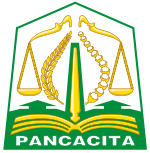 |
Emblem of Aceh | The Coat of arms of Aceh is called the Pancacita just like its motto, a sanskrit word which means "five hopes" each represented by symbols inside the emblem: justice is represented by scales, heroism represented by a rencong knife, prosperity represented by rice, cotton, and chimney, harmony represented by a mosque dome, and religiosity represented by a book a qalam pen. In addition, white represents purity, yellow represents glory, and green represents welfare. |
| 2 |  |
Coat of arms of North Sumatra | A clenched fist wielding a chain connected to a shield represents the determination of the North Sumatran people, a five pointed star, shield, and chain represent the unity of the people to defend Pancasila, a factory, port, rubber tree, oil palm tree, tobacco leaf, and farmer represent the resources of the province, 17 sheaves of cotton, an 8-sided web, and 45 rice seeds represent Indonesia's proclamation of independence day, the Barisan Mountains in the background represent noble personality, a sense of unity, and gotong royong within society, and lastly, the motto "Tekun Berkarya, Hidup Sejahtera, Mulia Berbudaya" means "work diligently, live prosperously, and be noble culturally". |
| 3 |  |
Coat of arms of West Sumatra | The emblem contains a mosque and a Rumah Gadang, traditional home of the Minangkabau people. It represents the west sumatran people and their traditional values and the Islamic religion. A star represents the first Pancasila principle: The one Almighty God, the waves represent the dynamic nature of the people, and the motto "Tuah Sakato" means "agreement to enforce the result of consensus decision-making to reach common goals". In addition, white represents purity, red represents courage, yellow represents greatness, black represents resilience and eternity, and green represents hope. |
| 4 |  |
Coat of arms of Riau | The emblem is a green shield with 45 links to represent the Indonesian year of independence, five waves represent Pancasila, the ship in the center is a "Lancang Kuning", a legendary boat of the Riau people, which symbolizes the Riau peoples history and their way of life as a people who depend on the sea, while a keris with a serindit head symbolizes heroism and struggle. Lastly, rice and cotton represent prosperity. |
| 5 |  |
Coat of arms of Riau Islands | The emblem consists of a yellow five-pointed star representing the first Pancasila principle: The one Almighty God. A chain surrounding the shield represents the unity of the people, a white-sailed yellow boat in the center symbolizes spirit of solidarity and determination of the people to accelerate development of the province, 24 seeds of rice and 9 cottons represent the formation of the province on 24 September 2002, keris with serindit head represent struggle to develop this maritime province to reach prosperity, red Tepak Sireh, a traditional Malay metal container to store betel, used for chewing and various traditional ceremony, it symbolize friendship, 7 waves symbolize 1 July 2004 when the province officially function, the motto "Berpancang Amanah, Bersauh Marwah" means Staked by Trust, Anchored by Dignity |
| 6 | 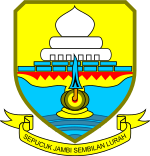 |
Coat of arms of Jambi | The emblem consists of a five-sided base symbolizing the Pancasilaic soul and spirit of the Jambi people, a mosque with 6 holes, 5 top foundations, 7 bottom foundations, and a keris representing the birth of the province on 6 January 1957, and the mosque itself representing the religion of the Jambi people. A Keris Siginjai, a legendary weapon from Jambi, symbolizes the struggle and heroism of Jambi people to defeat colonialism and tyranny. A Cerana, a traditional container to hold betel, symbolizes the holiness of the God. A Gong, a traditional musical instrument, represents the spirit of democracy, four lines below the gong represent the history of Jambi from the kingdom era to its formation as province, and the motto: "Sepucuk Jambi, Sembilan Lurah" means that Jambi consists of nine traditional regions. |
| 7 |  |
Coat of arms of South Sumatra | In the center of the emblem is a lotus with five petals symbolizing the national ideology Pancasila. The Ampera Bridge is an iconic structure in South Sumatra, while around the bridge, a mountain and rivers represent the geography of South Sumatra. Above the lotus is a traditional South Sumatran roof with 17 points, 8 roof lines, and 45 roof tiles, it represent the Indonesian independence date. The motto "Bersatu Teguh" means "United (we) stands" |
| 8 |  |
Coat of arms of Bengkulu | A star represents the One and Only God. Below the star is a cerana, a traditional metal container to hold betel representing tradition, a Rudus, a traditional sword representing heroism, and a Rafflesia arnoldii represent the nature of Bengkulu, rice and coffee symbolize prosperity, 18 waves symbolize the birth date of Bengkulu province (18 November 1968) |
| 9 |  |
Coat of arms of Bangka Belitung Islands | The emblem is a five pointed shield symbolizing the Pancasila. In the center is a map of Bangka Belitung representing the land, the people, the government, and the resources of the province. The map are inside a circle representing the unity of the people of Bangka Belitung to confront the globalized world, 27 seeds of rice symbolize the birth of the province based on the Law No. 27/2000. 31 peppers symbolize Bangka Belitung as the 31st province of Indonesia, while rice and pepper also symbolize prosperity. Between the rice and pepper is a tin ingot representing the natural resource of the country that has supported the economy of this region for more than 300 years. The emblem is coloured blue to represent the sea. The motto Serumpun Sebalai means The People of Bangka Belitung are a community (serumpun) working together with a sense of kinship (sebalai) to achieve their goals. |
| 10 |  |
Coat of arms of Lampung | The emblem consists of rice and pepper representing the resources of Lampung. A Laduk and Payan represent heroism, and a Gong Gajah Mekhu symbolizes democracy. A traditional Siger crown symbolizes culture and tradition, a traditional umbrella represent protection and the motto Sang Bumi Ruwa Jurai in Lampung language literally means One Land, Two Peoples, which can be interpreted as Sang Bumi Lampung. |
| 11 |  |
Coat of arms of Banten | Below the text "BANTEN" is an outline of a mosque dome symbolizing the religious culture of the people. A star represents the first principle of Pancasila: The One and Almighty God, while the tower of the Great Mosque of Banten symbolizes great spirit with the guidance of the God. The Gate of the Kaibon Palace below the tower represents Banten as a gateway to global civilization and international trade. Rice and cotton symbolize Banten as an agrarian province, and the number of seeds refers to date of the Indonesian proclamation of independence. A, black mountain in the background represents the land and resources. A the one horned javan rhinoceros is the provincial animal and symbolizes the persistence of the society to defend justice and protected by law. The rhino ia standing on an airport runway representing Soekarno–Hatta International Airport. A half-gear below the mountain represents development and industry, a blue wave represents the sea, the motto "Iman Taqwa" is a concept in the Islamic faith written on yellow scroll representing unity. |
| 12 |  |
Coat of arms of Special Capital Region of Jakarta | Designed by the then governor Henk Ngantung during his tenure. The emblem is five-pointed escutcheon, or shield, to symbolize Pancasila, the Indonesian ideology, with an outline of a gate and Indonesian National Monument to represent Jakarta as a special city, not only as the capital of Indonesia but as a city where Proclamation of Indonesian Independence happened. Rice and cotton are symbol of resources tied with golden rope symbolize unity, wave represent the sea, and the motto "Jaya Raya" which means "Glory and Greatness" written in red to symbolize heroism. The colour gold symbolize the holiness and greatness of Pancasila, white represent purity, yellow and green represent prosperity, and blue background represent the far-reaching sky. |
| 13 | 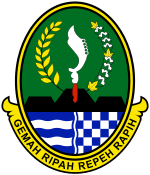 |
Coat of arms of West Java | The emblem is an egg-shaped shield used by a previous kingdom and the background is coloured green to represents the richness of the soil. In the center is a kujang, a traditional weapon of the Sundanese people. The kujang has five holes on it to symbolize Pancasila. There are 17 seeds of rice and 8 cottons representing the date of the Indonesian proclamation of independence on 17 August. Below the kujang is a black mountain representing the terrain of the province which has many mountains. Below it are wavy lines to represent the rivers and seas and beside it is a checkered pattern to represent the rice fields and plantations. Between the wavy and checkered patterns is a white line to represent the dams and canals. The motto is the Sundanese words "Gemah Ripah Repeh Rapih". The first two words mean serene and prosperous, and the last two words mean peaceful and harmonious. |
| 14 |  |
Emblem of Central Java | The emblem basic shape remembles that of a "Kundi Amerta", a ceremonial water jug. A five-pointed shape and a star symbolize Pancasila. Borobudur represents creativity, culture, and tradition, and twin mountains symbolize unity between local government and its people. The mountains, sea, and green background represents the natural geography of this province with its various resources as a source of livelihood for the Central Javan People. Below the star is a bambu runcing or sharpened bamboo, a traditional weapon to symbolize heroism, rice and cotton symbolize prosperity, red and white pennant on top symbolize nationalism. The motto "Prasetya Ulah Sakti Bhakti Praja" is a sanskrit word which means A vow and devotion with all might to build the nation and the country. |
| 15 |  |
Emblem of Special Region of Yogyakarta | The emblem is called golong-gilig because it has a circle (golong) and a cylinder (gilig), which represent the philosophy of life. It is related to the first principle of Pancasila, "The one almighty God", as represented by a five-pointed golden star. The second principle, "Humanity", is represented by a winged central pole/monument (Saka guru), the third principle, "Unity", is represented by a red circle surrounded by a white circle, the fourth principle "Democracy" represented by an object below the central pole called an "Ompak", which is a traditional carved stone foundation with a lotus pattern, and the fifth principle, "Social justice", is represented by rice and cotton. The other meanings that can be found in this emblem are religion, education, and culture which is represented by a star and jasmine below it with three sepals. Within the red circle is sentence written in Javanese script: "Rasa Suka Ngesti Pradja, Yogyakarta Terus Mandiri" which means "with a sense of optimism to build Yogyakarta that stands on its own" |
| 16 |  |
Coat of arms of East Java | The emblem is a shield to symbolize peace and security, a star represents "The One and Almighty God", the Heroes Monument symbolizes the heroism of the people during the Battle of Surabaya, a volcano represents the geography of the province, around the heroes monument is a temple (candi) gate to symbolize struggle and patriotism, while a river, farmland, rice and cotton represent prosperity, in addition the rice and cotton have numerical significance that symbolize Indonesian date of Independence, the gear represents industry and sense of friendship to outsiders, and the motto "Jer Basuki Mawa Beya" means "Sacrifice is needed to achieve goals". |
| 17 |  |
Emblem of Bali | The emblem is pentagon to represents Pancasila, inside the pentagon is five-pointed star to represents "The One and Almighty God". Margarana monument is symbolizing heroism of Bali people, the monument itself is a memorial for Battle of Margarana, the struggle of Balinese led by I Gusti Ngurah Rai to prevent the restoration of Dutch rule. Candi bentar, a traditional temple gate to symbolize religiousness. Chain represents unity and gotong royong, Balinese fans to represent culture and tradition, red lotus represents the throne of Shiva, rice and cotton represent prosperity and the motto "Bali Dwipa Jaya" means Glorious Bali Island, in addition the color blue represents solidarity, yellow represents glory, white represents purity, and red represents courage. |
| 18 |  |
Coat of arms of West Nusa Tenggara | The emblem is a shield to represents heroism and culture, inside the shield is star to represents Pancasila, Chain represent unity, rice and cotton represent prosperity, volcano represents Mount Rinjani, Dome shape represent religiousness, inside the dome is Javan rusa, the provincial animal. In addition, the color blue means loyalty, green means prosperity, white means purity, yellow means glory, black represent immortality, and red means courage to defend justice and truth. |
| 19 | 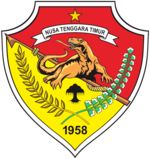 |
Coat of arms of East Nusa Tenggara | The emblem is red-yellow coloured shield, inside the shield is a star to symbolize "The One and Almighty God", Komodo dragon, the provincial animal symbolize the natural richness of the province, rice and cotton represent prosperity, spear represents glory and greatness, banyan tree represents unity, and the text "1958" is the birth year of this province. |
| 20 |  |
Coat of arms of West Kalimantan | The emblem base is a five-pointed shield to represent Pancasila, the shield are coloured light green to represent fertility of the land. Inside the shield base is traditional Dayak shield, mandau, and keris to represent culture and tradition, each of them coloured white to represent holiness and purity. Straight white line in the center is symbolizing the equator which crossed the province. Rice and cotton represents prosperity. There are 17 cottons, 8 flames, and 45 rice seeds to represent Indonesia date of Independence. The rice and cotton are tied white four-pointed ribbon to represent "Catur Karsa" or four principles: sincerity, honesty, gotong royong, and kinship. The motto "Akcaya" is an Old Javanese word which means "Will never perish" written on a white three-fold scroll to represent three foundations of national revolution or universal ambition of Indonesian nations: Unity of Indonesian from Sabang to Merauke, spiritual and material justice and prosperity to society, and strengthen the relationship between all nations and states. |
| 21 | 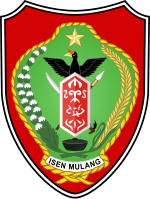 |
Coat of arms of Central Kalimantan | The emblem consists of sacred green jar (Balanga) to represents the potential resources of the province, the jar is surrounded by yellow rope made out of plant roots called "Tali Tengang", this rope is commonly used by fishermen and also used in traditional ceremonies, it represents unbreakable solidarity, the rope has 57 knots to represent the birth year of the province, inside the jar is traditional Dayaks shield or "Taliwang" and behind it is Mandau and Sipat or Blowgun to represents vigilance and endurance of the society to defend the country from inside and outside threat, the Taliwang are painted with pattern called "Haramaung Batulang, Pengadien Balikur Talawang" which means "Only tiger with muscle made out of wire, and bone made out of steel can stands against everything" it represents the struggle of the people to achieve justice and prosperous society. Rice and cotton represent prosperity, star represents Pancasila. Above the shield is Hornbill or "Enggang" the provincial animals to symbolize environmental protection, below the shield is musical instrument called "Galantung" which used to call people before announcing something or ceremonial purposes, it represents tradition and unity. Lastly, the motto "Isen Mulang" which means "Never Give Up" . |
| 22 |  |
Coat of arms of South Kalimantan | Shield represents vigilance and defense of the people, star represents the first principle of Pancasila: "The One and Almighty God", the house in the center is called Bubungan Tinggi, the traditional house of the Banjar people to symbolize culture. Diamond, rice, and rubber wood symbolize the resources of the province. The white ribbon represents the linkage of all aspect of life: food, clothing, culture, belief, etc. In addition, the color red represents courage, yellow means hope, green means fertility, white means purity, black means persistence. Lastly, the motto "Waja Sampai Kaputing" means "Keep Strong Until The End". |
| 23 | 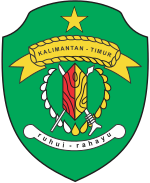 |
Coat of arms of East Kalimantan | Shield represents defense of the people, star represents the Pancasila, traditional Dayak weapons like shield called "Telabang", mandau, and blowgun represents readiness and competence. The weapons are surrounded by oil droplets and dammar resin to represent resources of the province, if the droplet and resins amount were added it becomes 17 which is the date of Indonesian independence. Above the shield is the name of the province surrounded 24 knots of rattan to represents the birth day of the province: 1 January 1957 (1+1+1+9+5+7=24), and below the shield is the motto: "Ruhui Rahayu" which means "Perfect harmony with the blessing from God", in addition the color green means fertility, gold means holiness and greatness, red means courage, white means purity, and black means sincerity. |
| 24 |  |
Coat of arms of North Kalimantan | The emblem contain star represents the first principle of Pancasila: "Belief in One and Only God", traditional Dayak, Bulungan, and Tidung weapons like shield, mandau, and spear represents harmony between various culture and readiness to confront challenge from inside and outside, rice and cotton represents prosperity, the blue wave represent the potential resources from the sea and its shape represents the dynamics of society, 4 white waves represents the four major river (Kayan, Sesayap, Sembakung, and Sebuku) of the province that connects the people of the hinterland to the coast and border, the red and white gate represent North Kalimantan as the frontier of Indonesia as it is bordering the neighboring Malaysia, and the motto "Benuanta" means "Our land for us to develop to achieve prosperous society". In addition the color blue means beauty, peace, and prestige, green means fertility and growth, yellow means holiness and greatness, red means courage and strength, white means purity and honesty, and black means sincerity and protection. |
| 25 | 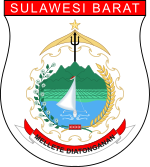 |
Coat of arms of West Sulawesi | The emblem is a white jars that contain various object, in the center is circling patterns called "Meander Kalumpang Tegak", there are 14 outer and inner patterns, it represents the 14 historical Mandar kingdom within West Sulawesi that kept being united until today, its colored gold to symbolize prosperity, tranquility, and holiness. Within the meander pattern is the geography and resources of the province represented by mountains, farmland, and sea. On the sea lies traditional Mandarese boat called Sandeq facing forward to symbolize the people that keep moving forward, the boat colored white to represents genuine heart to change for the better. On the sea is 5 white waves to symbolize the five regency that exist during the province formation. Jasmine and rice tied with red silk represents prosperity, purity, beauty, openness, fragrancy, and manners. Above the mountain is "Doe Pakka" or Trident with each prongs represents courage, sharp mind, and knowledge, the trident is straight to represents strength and honesty, and colored black to represents humility. Above the trident is umbrella to represents protection, and above it is a star to symbolize Pancasila and hopes. Lastly, the motto "Mellete Diatonganan" which means "Following the Truth" written on a red and white scroll that represents the country. |
| 26 |  |
Emblem of South Sulawesi | The emblem is a reminiscent of socialist heraldry design. It contains star represents the first principle of Pancasila: "The one and almighty God". 17 seeds of rice, 8 seeds of cotton with 5 points on the fruit and 4 points of its leaves to symbolize date of Indonesian independence on 17 August 1945. Traditional dagger called Badik to represents heroism and vigilancy to defend the country. Mountain, village, and rice field to symbolize prosperity and fertility. Below the badik is Fort Somba Opu viewed from above to represents defense against imperialism and neocolonialism, within the fort is three emblems: Traditional pinisi boat represents the history of its people as seafarer that cross the ocean, it also symbolize persistence to continue the goals of Indonesian independence, gear and hoe represents the industry and agriculture, and coconut to represents the resources of the province. Lastly, the motto "Todo Puli" written in Lontara script means "Unshakable faith" |
| 27 |  |
Emblem of Southeast Sulawesi | The emblem is pentagon-shaped to symbolize Indonesian ideology Pancasila. Inside the emblem is rice and cotton to represents prosperity, unbroken chain made out of 27 links to represents unity and its birth date on 27 April. Within the chain is a head of endemic animal called Anoa to represents tenacity and agility. And lastly, the color white represents purity and the other color represents all the regency that exist during the province formation: Yellow represents Muna Regency which is rich in teak, brown represents Kolaka Regency which is rich in nickel, black represents Buton Regency which is rich in asphalt, and green represent fertile land of Kendari Regency, now renamed Konawe Regency to prevent confusion with Kendari City. |
| 28 | 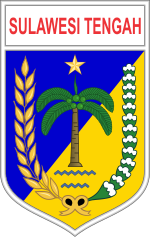 |
Coat of arms of Central Sulawesi | The emblem are shaped like heart to symbolize the emblem meaning are derived from the heart of the people itself. The central part of the emblem is coconut tree which symbolize the resources because all parts of coconut tree are useful to human, it also represents sacrifice to achieve goals, tranquility, and persistence. The coconut tree has five leaves and five fruit to represent Pancasila, above it is a star to represents its first principle: "The One and Almighty God". Waves represent the maritime culture of the province. Rice and cotton represents prosperity, it also have numerical significance to represents the province's birth date on 13 April 1964. In addition, the color blue represents loyalty and hope, yellow represents wealth and glory, green represents fertility, brown represents tranquility, and red represents courage. |
| 29 |  |
Coat of arms of Gorontalo | The emblem to some extent was inspired by its namesake capital Gorontalo City. The emblem is colored purple which is one of traditional color in Gorontalo. Within the emblem is five-pointed star that represents Pancasila and rice and cotton that represents prosperity. In the center is white maleo egg and wings, the endemic bird that can be found all over Sulawesi, it represents hope like a bird that soar in the sky. Within the egg are coconut trees that represents its economy, Otanaha Fortress and book represent traditional proverb: "Adat bersendikan sara', sara' bersendikan kitabullah", which means traditional laws are based on religious laws, and religious laws are based on the Quran. Below the egg is the name of the province on red scroll and chain to represents unity. |
| 30 |  |
Emblem of North Sulawesi | The emblem are pentagon shaped to symbolize Indonesia ideology Pancasila. Within the emblem are 45 seeds of rice on the left, 8 nutmegs and 17 cloves on the right, all of them symbolize the Indonesian Independence proclamation on 17 August 1945. In the center is 23 corn seeds encircling a coconut tree with 9 leaves, 6 roots, and 4 seeds just outside the corn circle, it represents the birth of the province on 23 September 1964. The corns, coconut, nutmegs, cloves, and rice all represents the resources of the province. In addition the various color on the emblem represents fertility, loyalty, glory, courage, persistence, and tranquility. |
| 31 |  |
Coat of arms of Maluku | The emblem is called "SIWALIMA" just like its motto, it's the philosophy of the Moluccans to unite the different groups to achieve prosperity. Within the emblem is sago palm leaves, sago is the staple food of Moluccans, and coconut leaves both to represents resources and life. In the center are spear to symbolize heroism, pearl to represents marine resources. Mountain, nutmeg, and cloves to symbolize the land and forest resources, sea and boat to represents everlasting unity. There are 17 coconut leaflets, 8 pearls, and 45 sago leaves, all of them represents the Indonesian date of Independence on 17 August 1945. |
| 32 |  |
Coat of arms of North Maluku | The emblem consist of various objects, the palm leaves, cloves, and nutmeg represents prosperity. Star represents the first principle of Pancasila: The one almighty God. Mountain represents the land and its resources, sea and boats with radiant star represents unity. Traditional shield called Salawaku crossed with Parang blade represents heroism. The number 1999 represents the birth year of the province. And lastly, the motto: Marimoi Ngone Futuru which means United we stand. |
| 33 |  |
Coat of arms of Southwest Papua | The emblem consists of shield, which represents the province as protector of the people. The white star represents the first principle of Pancasila: "The one and almighty God". Rice and cotton represents prosperity and welfare, and at the bottom end of them there is Kain Timor, a traditional cloth, which represents the unity of Doberai people. The chains represent unity, and the Cicinnurus respublica head on top of it symbolized the Provincial Government. The traditional stilt house symbolized the province capability to accommodate the people of Indonesia and abroad. The mountains, sea and island chains represents the ecological diversity of Southwest Papua, with the flaming oil and natural gas tower represents the natural resources of the province. The three stones symbolized the "Custom, Religion, and Government". The red-white ribbon represents the province as part of Indonesia, with the motto Bersatu Membangun Negeri on it means Unite to Build the Nation. |
| 34 | 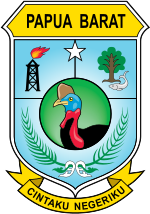 |
Coat of arms of West Papua | The emblem is a five-pointed blue shield to represents Pancasila with its five principles that will protect the people. Within the shield is a white star to represents first principle of Pancasila: The One and Almighty God. The shield is divided into three blue regions that symbolize the element of West Papua: Religion, Government, and People/Tradition, each of them work together to achieve common goals. The first region are depiction of gas flare found in oil plants to represents its mineral and petroleum resources, the second region depict a tree and a fish to symbolize the land and marine resources, the third region depict sago palm leaves with 12 leaflets on the right and 10 leaflets on the left, tied together with two karerin carvings of the Biak people both depicting number 9, it symbolizes the birth of the province on 12 October 1999. In the center of the shield is green circle with cassowary head to symbolize the province location as the "head and neck" part of the New Guinea island, it also represents courage, strength, persistence, and unity to achieve common goals. Lastly, the motto: Cintaku Negeriku is an Indonesian word which means My Love, My Country. |
| 35 |  |
Coat of arms of Central Papua | The emblem consists of five pointed shield to symbolize Pancasila with the star itself represent the first principles which is belief in the one and only God. The emblem is surrounded by red and white border that symbolize the country. The blue and white mountain is Puncak Jaya that is famous for its snow-capped peak, it symbolize peace, strength, and resilience. The blue and green color on the shield respectively represent the sky and fertile soil. The ocean represent perseverance, patience, and loyalty. In the center is a noken or traditional woven bag and in the front of it are stone axe and sago harvester, both are important tools for locals and each symbolize principle and authority. 25 rice and 7 cotton represents 25 July as the anniversary date of this province. The motto Gerbang Cenderawasih literally means "Gateway of Bird-of-paradise", the bird-of-paradise are endemic bird in the Papua island. The motto is actually a backronym for Gerakan Pembangunan yang Cepat, Nasionalis, Damai, Sejahtera, Wibawa dan Kasih which means "Action for Development, that are Rapid, Nationalist, Peaceful, Prosperous, Authoritative and Loving". This motto represents a guiding principle for the civil service in the Central Papua government to provide effective service to the people of the region while upholding the values. |
| 36 | 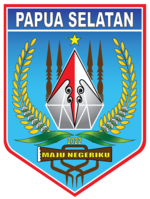 |
Coat of arms of South Papua | The five-pointed shield represents the spirit of the people in protecting the country. The yellow star symbolizes the first principle of Pancasila: "Belief in the One and Only God," as well as promoting religious tolerance. The four arrows represent the original regencies that formed this province. The red and white spearhead pointing upwards symbolizes courage and swift action in all aspects of defense, reflecting its status as the easternmost border of Indonesia. The diamond represents the power and love of the people, as well as the beauty of the land and its potential. The 30 grains of rice and six cotton balls symbolize the birth date of this province, June 30. The rice, cotton, and sago leaves signify prosperity. The traditional Papuan musical instrument, the tifa, symbolizes community togetherness in building South Papua. The four tree roots at the bottom, patterned like a river, represent the river as an important transportation method for the province, connecting the hinterland with the coast. The motto Maju Negeriku means "Onward my Country". |
| 37 | 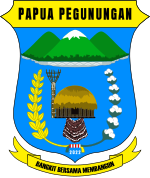 |
Coat of arms of Highland Papua | The emblem is five-pointed shield to represents defense and the Indonesian ideology Pancasila. The mountains and valleys represent the abundant natural resources of the Lapago customary region within the province, while the rivers symbolize the fertile soil in the province. The watchtower, which customarily was used to scout for enemies during a tribal war, stands for the hope that the region will give birth to leaders who have a great vision and mission for the province's better future. Honai traditional house represent the tribes of Highland Papua. It also stands for being of one heart and one mind in solving various problems. The noken bag symbolize women's role in developing the province. The 25 wheat grains, 7 cottons and year "2022" represent the establishment of the province on 25 July 2022. The 8 red-white ribbons represent the eight regencies of the province within the frame of Republic of Indonesia. The motto Bangkit Bersama Membangun means Rise Together to Develop. |
| 38 |  |
Coat of arms of Papua | The emblem is five-pointed shield to represents defense and the Indonesian ideology Pancasila. The base colour of this emblem is gold represents glory and wealth of the land, blue represents marine resources, and the yellow border represents confidence to achieve all goals. In the center of the emblem is three monuments that stands on 6 upper foundation and 9 lower foundation, it represents the success of Operation Trikora and "PEPERA" or Act of Free Choice to unite Western New Guinea with Indonesia in 1969, the color white and black represents peace and purity. 17 seeds of rice and 8 cottons tied by red ribbon knots with 4 loops and 5 ends symbolize unity of the nations and country with the spirit of Proclamation of Indonesian Independence on 17 August 1945 to achieve just and prosperous society. Three mountains on the background represents the geography of the province, the colour green represents fertility of the Papuan island. Lastly, the motto Karya Swadaya means Work with one's own might. |
Regencies and cities
Aceh
See also: Aceh-
 Aceh Besar Regency
Aceh Besar Regency
-
 Aceh Jaya Regency
Aceh Jaya Regency
-
 Aceh Singkil Regency
Aceh Singkil Regency
-
 Aceh Tamiang Regency
Aceh Tamiang Regency
-
 Central Aceh Regency
Central Aceh Regency
-
 East Aceh Regency
East Aceh Regency
-
 North Aceh Regency
North Aceh Regency
-
 South Aceh Regency
South Aceh Regency
-
 Southeast Aceh Regency
Southeast Aceh Regency
-
 Southwest Aceh Regency
Southwest Aceh Regency
-
 West Aceh Regency
West Aceh Regency
-
 Bener Meriah Regency
Bener Meriah Regency
-
 Bireuen Regency
Bireuen Regency
-
 Gayo Lues Regency
Gayo Lues Regency
-
 Nagan Raya Regency
Nagan Raya Regency
-
 Pidie Regency
Pidie Regency
-
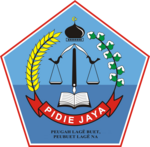 Pidie Jaya Regency
Pidie Jaya Regency
-
 Simeulue Regency
Simeulue Regency
-
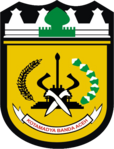 Banda Aceh City
Banda Aceh City
-
 Langsa City
Langsa City
-
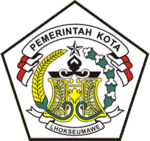 Lhokseumawe City
Lhokseumawe City
-
 Sabang City
Sabang City
-
 Subulussalam City
Subulussalam City
North Sumatra
See also: North Sumatra-
 Asahan Regency
Asahan Regency
-
 Batubara Regency
Batubara Regency
-
 Dairi Regency
Dairi Regency
-
 Deli Serdang Regency
Deli Serdang Regency
-
 Humbang Hasundutan Regency
Humbang Hasundutan Regency
-
 Karo Regency
Karo Regency
-
 Labuhanbatu Regency
Labuhanbatu Regency
-
 North Labuhanbatu Regency
North Labuhanbatu Regency
-
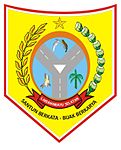 South Labuhanbatu Regency
South Labuhanbatu Regency
-
 Langkat Regency
Langkat Regency
-
 Mandailing Natal Regency
Mandailing Natal Regency
-
 Nias Regency
Nias Regency
-
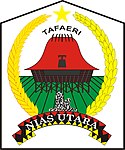 North Nias Regency
North Nias Regency
-
South Nias Regency
-
 West Nias Regency
West Nias Regency
-
 Padang Lawas Regency
Padang Lawas Regency
-
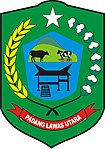 North Padang Lawas Regency
North Padang Lawas Regency
-
 Pakpak Bharat Regency
Pakpak Bharat Regency
-
 Samosir Regency
Samosir Regency
-
 Serdang Bedagai Regency
Serdang Bedagai Regency
-
 Simalungun Regency
Simalungun Regency
-
 Central Tapanuli Regency
Central Tapanuli Regency
-
 North Tapanuli Regency
North Tapanuli Regency
-
 South Tapanuli Regency
South Tapanuli Regency
-
 Toba Regency
Toba Regency
-
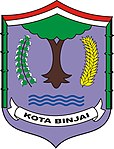 Binjai City
Binjai City
-
 Gunungsitoli City
Gunungsitoli City
-
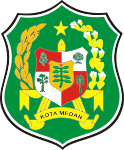 Medan City
Medan City
-
 Padangsidempuan City
Padangsidempuan City
-
 Pematangsiantar City
Pematangsiantar City
-
 Sibolga City
Sibolga City
-
 Tanjungbalai City
Tanjungbalai City
-
 Tebing Tinggi City
Tebing Tinggi City
West Sumatra
See also: West Sumatra-
Agam Regency
-
 Dharmasraya Regency
Dharmasraya Regency
-
 Lima Puluh Kota Regency
Lima Puluh Kota Regency
-
 Mentawai Islands Regency
Mentawai Islands Regency
-
 Padang Pariaman Regency
Padang Pariaman Regency
-
 Pasaman Regency
Pasaman Regency
-
 West Pasaman Regency
West Pasaman Regency
-
 Pesisir Selatan Regency
Pesisir Selatan Regency
-
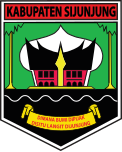 Sijunjung Regency
Sijunjung Regency
-
 Solok Regency
Solok Regency
-
 South Solok Regency
South Solok Regency
-
 Tanah Datar Regency
Tanah Datar Regency
-
 Bukittinggi City
Bukittinggi City
-
 Padang City
Padang City
-
 Padang Panjang City
Padang Panjang City
-
 Pariaman City
Pariaman City
-
 Payakumbuh City
Payakumbuh City
-
 Sawahlunto City
Sawahlunto City
-
 Solok City
Solok City
Riau
See also: Riau-
 Bengkalis Regency
Bengkalis Regency
-
 Indragiri Hilir Regency
Indragiri Hilir Regency
-
 Indragiri Hulu Regency
Indragiri Hulu Regency
-
 Kampar Regency
Kampar Regency
-
Kuantan Singingi Regency
-
 Meranti Islands Regency
Meranti Islands Regency
-
 Pelalawan Regency
Pelalawan Regency
-
 Rokan Hilir Regency
Rokan Hilir Regency
-
 Rokan Hulu Regency
Rokan Hulu Regency
-
 Siak Regency
Siak Regency
-
 Dumai City
Dumai City
-
Pekanbaru City
Riau Islands
See also: Riau Islands-
 Anambas Islands Regency
Anambas Islands Regency
-
 Bintan Regency
Bintan Regency
-
 Karimun Regency
Karimun Regency
-
 Lingga Regency
Lingga Regency
-
 Natuna Regency
Natuna Regency
-
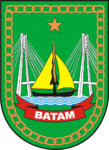 Batam City
Batam City
-
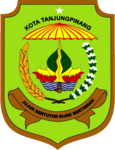 Tanjung Pinang City
Tanjung Pinang City
Jambi
See also: Jambi-
 Batanghari Regency
Batanghari Regency
-
 Bungo Regency
Bungo Regency
-
 Kerinci Regency
Kerinci Regency
-
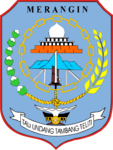 Merangin Regency
Merangin Regency
-
 Muaro Jambi Regency
Muaro Jambi Regency
-
 Sarolangun Regency
Sarolangun Regency
-
 East Tanjung Jabung Regency
East Tanjung Jabung Regency
-
 West Tanjung Jabung Regency
West Tanjung Jabung Regency
-
 Tebo Regency
Tebo Regency
-
 Jambi City
Jambi City
-
 Sungai Penuh City
Sungai Penuh City
South Sumatra
See also: South Sumatra-
 Banyuasin Regency
Banyuasin Regency
-
 Empat Lawang Regency
Empat Lawang Regency
-
 Lahat Regency
Lahat Regency
-
 Muara Enim Regency
Muara Enim Regency
-
 Musi Banyuasin Regency
Musi Banyuasin Regency
-
Musi Rawas Regency
-
 North Musi Rawas Regency
North Musi Rawas Regency
-
 Ogan Ilir Regency
Ogan Ilir Regency
-
 Ogan Komering Ilir Regency
Ogan Komering Ilir Regency
-
 Ogan Komering Ulu Regency
Ogan Komering Ulu Regency
-
 East Ogan Komering Ulu Regency
East Ogan Komering Ulu Regency
-
South Ogan Komering Ulu Regency
-
 Penukal Abab Lematang Ilir Regency
Penukal Abab Lematang Ilir Regency
-
 Lubuklinggau City
Lubuklinggau City
-
 Pagar Alam City
Pagar Alam City
-
 Palembang City
Palembang City
-
 Prabumulih City
Prabumulih City
Bengkulu
See also: Bengkulu-
 Central Bengkulu Regency
Central Bengkulu Regency
-
 North Bengkulu Regency
North Bengkulu Regency
-
 South Bengkulu Regency
South Bengkulu Regency
-
 Kaur Regency
Kaur Regency
-
 Kepahiang Regency
Kepahiang Regency
-
 Lebong Regency
Lebong Regency
-
 Mukomuko Regency
Mukomuko Regency
-
 Rejang Lebong Regency
Rejang Lebong Regency
-
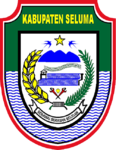 Seluma Regency
Seluma Regency
-
 Bengkulu City
Bengkulu City
Bangka Belitung Islands
See also: Bangka Belitung Islands-
 Bangka Regency
Bangka Regency
-
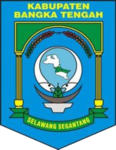 Central Bangka Regency
Central Bangka Regency
-
 South Bangka Regency
South Bangka Regency
-
 West Bangka Regency
West Bangka Regency
-
 Belitung Regency
Belitung Regency
-
 East Belitung Regency
East Belitung Regency
-
 Pangkal Pinang City
Pangkal Pinang City
Lampung
See also: Lampung-
 Central Lampung Regency
Central Lampung Regency
-
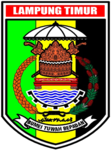 East Lampung Regency
East Lampung Regency
-
 North Lampung Regency
North Lampung Regency
-
 South Lampung Regency
South Lampung Regency
-
 West Lampung Regency
West Lampung Regency
-
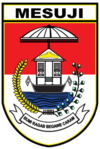 Mesuji Regency
Mesuji Regency
-
 Pesawaran Regency
Pesawaran Regency
-
 Pesisir Barat Regency
Pesisir Barat Regency
-
 Pringsewu Regency
Pringsewu Regency
-
 Tanggamus Regency
Tanggamus Regency
-
 Tulang Bawang Regency
Tulang Bawang Regency
-
 West Tulang Bawang Regency
West Tulang Bawang Regency
-
 Way Kanan Regency
Way Kanan Regency
-
 Bandar Lampung City
Bandar Lampung City
-
 Metro City
Metro City
Banten
See also: Banten-
 Lebak Regency
Lebak Regency
-
 Pandeglang Regency
Pandeglang Regency
-
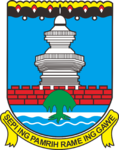 Serang Regency
Serang Regency
-
 Tangerang Regency
Tangerang Regency
-
 Cilegon City
Cilegon City
-
 Serang City
Serang City
-
 Tangerang City
Tangerang City
-
 South Tangerang City
South Tangerang City
Jakarta
See also: Jakarta-
 Kepulauan Seribu Administrative Regency
Kepulauan Seribu Administrative Regency
-
 West Jakarta Administrative City
West Jakarta Administrative City
-
 Central Jakarta Administrative City
Central Jakarta Administrative City
-
 South Jakarta Administrative City
South Jakarta Administrative City
-
 East Jakarta Administrative City
East Jakarta Administrative City
-
 North Jakarta Administrative City
North Jakarta Administrative City
West Java
See also: West Java-
 Bandung Regency
Bandung Regency
-
 West Bandung Regency
West Bandung Regency
-
 Bekasi Regency
Bekasi Regency
-
 Bogor Regency
Bogor Regency
-
 Ciamis Regency
Ciamis Regency
-
 Cianjur Regency
Cianjur Regency
-
 Cirebon Regency
Cirebon Regency
-
 Garut Regency
Garut Regency
-
 Indramayu Regency
Indramayu Regency
-
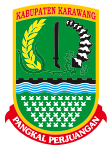 Karawang Regency
Karawang Regency
-
 Kuningan Regency
Kuningan Regency
-
 Majalengka Regency
Majalengka Regency
-
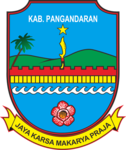 Pangandaran Regency
Pangandaran Regency
-
 Purwakarta Regency
Purwakarta Regency
-
 Subang Regency
Subang Regency
-
 Sukabumi Regency
Sukabumi Regency
-
 Sumedang Regency
Sumedang Regency
-
 Tasikmalaya Regency
Tasikmalaya Regency
-
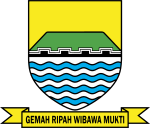 Bandung City
Bandung City
-
 Banjar City
Banjar City
-
 Bekasi City
Bekasi City
-
 Bogor City
Bogor City
-
 Cimahi City
Cimahi City
-
 Cirebon City
Cirebon City
-
 Depok City
Depok City
-
 Sukabumi City
Sukabumi City
-
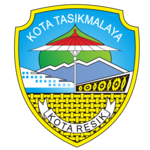 Tasikmalaya City
Tasikmalaya City
Central Java
See also: Central Java-
 Banjarnegara Regency
Banjarnegara Regency
-
 Banyumas Regency
Banyumas Regency
-
 Batang Regency
Batang Regency
-
 Blora Regency
Blora Regency
-
 Boyolali Regency
Boyolali Regency
-
 Brebes Regency
Brebes Regency
-
 Cilacap Regency
Cilacap Regency
-
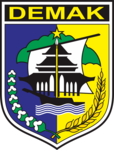 Demak Regency
Demak Regency
-
 Grobogan Regency
Grobogan Regency
-
 Jepara Regency
Jepara Regency
-
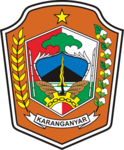 Karanganyar Regency
Karanganyar Regency
-
 Kebumen Regency
Kebumen Regency
-
 Kendal Regency
Kendal Regency
-
 Klaten Regency
Klaten Regency
-
 Kudus Regency
Kudus Regency
-
 Magelang Regency
Magelang Regency
-
 Pati Regency
Pati Regency
-
 Pekalongan Regency
Pekalongan Regency
-
 Pemalang Regency
Pemalang Regency
-
 Purbalingga Regency
Purbalingga Regency
-
 Purworejo Regency
Purworejo Regency
-
 Rembang Regency
Rembang Regency
-
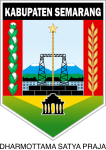 Semarang Regency
Semarang Regency
-
 Sragen Regency
Sragen Regency
-
 Sukoharjo Regency
Sukoharjo Regency
-
 Tegal Regency
Tegal Regency
-
 Temanggung Regency
Temanggung Regency
-
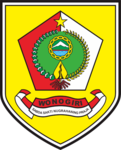 Wonogiri Regency
Wonogiri Regency
-
 Wonosobo Regency
Wonosobo Regency
-
 Magelang City
Magelang City
-
 Pekalongan City
Pekalongan City
-
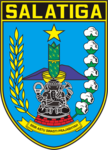 Salatiga City
Salatiga City
-
 Semarang City
Semarang City
-
 Surakarta (Solo) City
Surakarta (Solo) City
-
 Tegal City
Tegal City
Special Region of Yogyakarta
See also: Special Region of YogyakartaEast Java
See also: East Java-
 Bangkalan Regency
Bangkalan Regency
-
 Banyuwangi Regency
Banyuwangi Regency
-
 Blitar Regency
Blitar Regency
-
 Bojonegoro Regency
Bojonegoro Regency
-
 Bondowoso Regency
Bondowoso Regency
-
 Gresik Regency
Gresik Regency
-
 Jember Regency
Jember Regency
-
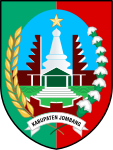 Jombang Regency
Jombang Regency
-
 Kediri Regency
Kediri Regency
-
 Lamongan Regency
Lamongan Regency
-
 Lumajang Regency
Lumajang Regency
-
 Madiun Regency
Madiun Regency
-
 Magetan Regency
Magetan Regency
-
 Malang Regency
Malang Regency
-
 Mojokerto Regency
Mojokerto Regency
-
 Nganjuk Regency
Nganjuk Regency
-
 Ngawi Regency
Ngawi Regency
-
 Pacitan Regency
Pacitan Regency
-
 Pamekasan Regency
Pamekasan Regency
-
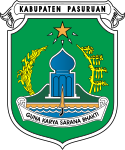 Pasuruan Regency
Pasuruan Regency
-
 Ponorogo Regency
Ponorogo Regency
-
 Probolinggo Regency
Probolinggo Regency
-
 Sampang Regency
Sampang Regency
-
 Sidoarjo Regency
Sidoarjo Regency
-
 Situbondo Regency
Situbondo Regency
-
 Sumenep Regency
Sumenep Regency
-
 Trenggalek Regency
Trenggalek Regency
-
 Tuban Regency
Tuban Regency
-
 Tulungagung Regency
Tulungagung Regency
-
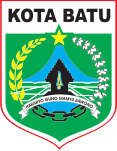 Batu City
Batu City
-
 Blitar City
Blitar City
-
 Kediri City
Kediri City
-
 Madiun City
Madiun City
-
 Malang City
Malang City
-
 Mojokerto City
Mojokerto City
-
 Pasuruan City
Pasuruan City
-
 Probolinggo City
Probolinggo City
-
 Surabaya City
Surabaya City
Bali
See also: Bali-
 Badung Regency
Badung Regency
-
 Bangli Regency
Bangli Regency
-
 Buleleng Regency
Buleleng Regency
-
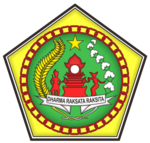 Gianyar Regency
Gianyar Regency
-
 Jembrana Regency
Jembrana Regency
-
 Karangasem Regency
Karangasem Regency
-
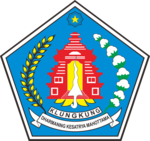 Klungkung Regency
Klungkung Regency
-
 Tabanan Regency
Tabanan Regency
-
 Denpasar City
Denpasar City
West Nusa Tenggara
See also: West Nusa Tenggara-
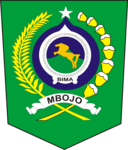 Bima Regency
Bima Regency
-
 Dompu Regency
Dompu Regency
-
 Central Lombok Regency
Central Lombok Regency
-
 East Lombok Regency
East Lombok Regency
-
 North Lombok Regency
North Lombok Regency
-
 West Lombok Regency
West Lombok Regency
-
 Sumbawa Regency
Sumbawa Regency
-
 West Sumbawa Regency
West Sumbawa Regency
-
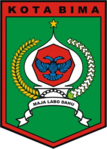 Bima City
Bima City
-
 Mataram City
Mataram City
East Nusa Tenggara
See also: East Nusa Tenggara-
 Alor Regency
Alor Regency
-
 Belu Regency
Belu Regency
-
 Ende Regency
Ende Regency
-
 East Flores Regency
East Flores Regency
-
 Kupang Regency
Kupang Regency
-
 Lembata Regency
Lembata Regency
-
 Malaka Regency
Malaka Regency
-
 Manggarai Regency
Manggarai Regency
-
 East Manggarai Regency
East Manggarai Regency
-
 West Manggarai Regency
West Manggarai Regency
-
 Ngada Regency
Ngada Regency
-
 Nagekeo Regency
Nagekeo Regency
-
 Rote Ndao Regency
Rote Ndao Regency
-
 Sabu Raijua Regency
Sabu Raijua Regency
-
 Sikka Regency
Sikka Regency
-
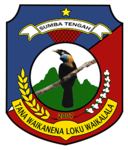 Central Sumba Regency
Central Sumba Regency
-
 East Sumba Regency
East Sumba Regency
-
 Southwest Sumba Regency
Southwest Sumba Regency
-
 West Sumba Regency
West Sumba Regency
-
 North Central Timor Regency
North Central Timor Regency
-
 South Central Timor Regency
South Central Timor Regency
-
 Kupang City
Kupang City
West Kalimantan
See also: West Kalimantan-
 Bengkayang Regency
Bengkayang Regency
-
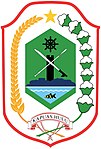 Kapuas Hulu Regency
Kapuas Hulu Regency
-
 North Kayong Regency
North Kayong Regency
-
 Ketapang Regency
Ketapang Regency
-
 Kubu Raya Regency
Kubu Raya Regency
-
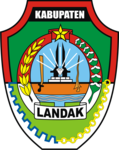 Landak Regency
Landak Regency
-
 Melawi Regency
Melawi Regency
-
 Mempawah Regency
Mempawah Regency
-
 Sambas Regency
Sambas Regency
-
 Sanggau Regency
Sanggau Regency
-
 Sekadau Regency
Sekadau Regency
-
 Sintang Regency
Sintang Regency
-
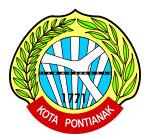 Pontianak City
Pontianak City
-
 Singkawang City
Singkawang City
Central Kalimantan
See also: Central Kalimantan-
 East Barito Regency
East Barito Regency
-
 North Barito Regency
North Barito Regency
-
 South Barito Regency
South Barito Regency
-
 Gunung Mas Regency
Gunung Mas Regency
-
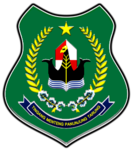 Kapuas Regency
Kapuas Regency
-
 Katingan Regency
Katingan Regency
-
 East Kotawaringin Regency
East Kotawaringin Regency
-
 West Kotawaringin Regency
West Kotawaringin Regency
-
 Lamandau Regency
Lamandau Regency
-
 Murung Raya Regency
Murung Raya Regency
-
 Pulang Pisau Regency
Pulang Pisau Regency
-
 Sukamara Regency
Sukamara Regency
-
 Seruyan Regency
Seruyan Regency
-
 Palangka Raya City
Palangka Raya City
South Kalimantan
See also: South Kalimantan-
 Balangan Regency
Balangan Regency
-
 Banjar Regency
Banjar Regency
-
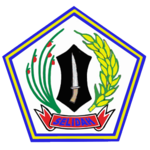 Barito Kuala Regency
Barito Kuala Regency
-
 Central Hulu Sungai Regency
Central Hulu Sungai Regency
-
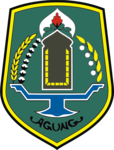 North Hulu Sungai Regency
North Hulu Sungai Regency
-
 South Hulu Sungai Regency
South Hulu Sungai Regency
-
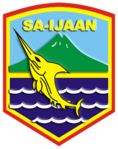 Kotabaru Regency
Kotabaru Regency
-
 Tabalong Regency
Tabalong Regency
-
 Tanah Bumbu Regency
Tanah Bumbu Regency
-
 Tanah Laut Regency
Tanah Laut Regency
-
 Tapin Regency
Tapin Regency
-
 Banjarbaru City
Banjarbaru City
-
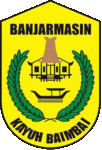 Banjarmasin City
Banjarmasin City
East Kalimantan
See also: East Kalimantan-
 Berau Regency
Berau Regency
-
 Kutai Kartanegara Regency
Kutai Kartanegara Regency
-
 East Kutai Regency
East Kutai Regency
-
 West Kutai Regency
West Kutai Regency
-
 Mahakam Ulu Regency
Mahakam Ulu Regency
-
 Paser Regency
Paser Regency
-
 Penajam North Paser Regency
Penajam North Paser Regency
-
 Balikpapan City
Balikpapan City
-
 Bontang City
Bontang City
-
 Samarinda City
Samarinda City
North Kalimantan
See also: North KalimantanWest Sulawesi
See also: West Sulawesi-
 Majene Regency
Majene Regency
-
 Mamasa Regency
Mamasa Regency
-
 Mamuju Regency
Mamuju Regency
-
 Central Mamuju Regency
Central Mamuju Regency
-
 Pasangkayu Regency
Pasangkayu Regency
-
 Polewali Mandar Regency
Polewali Mandar Regency
South Sulawesi
See also: South Sulawesi-
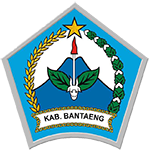 Bantaeng Regency
Bantaeng Regency
-
 Barru Regency
Barru Regency
-
 Bone Regency
Bone Regency
-
 Bulukumba Regency
Bulukumba Regency
-
 Enrekang Regency
Enrekang Regency
-
 Gowa Regency
Gowa Regency
-
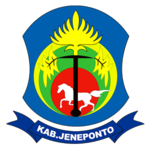 Jeneponto Regency
Jeneponto Regency
-
 Luwu Regency
Luwu Regency
-
 East Luwu Regency
East Luwu Regency
-
 North Luwu Regency
North Luwu Regency
-
 Maros Regency
Maros Regency
-
 Pangkajene and Islands (Pangkep) Regency
Pangkajene and Islands (Pangkep) Regency
-
 Pinrang Regency
Pinrang Regency
-
 Selayar Islands Regency
Selayar Islands Regency
-
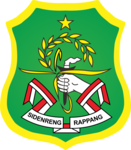 Sidenreng Rappang (Sidrap) Regency
Sidenreng Rappang (Sidrap) Regency
-
 Sinjai Regency
Sinjai Regency
-
 Soppeng Regency
Soppeng Regency
-
 Takalar Regency
Takalar Regency
-
 North Toraja Regency
North Toraja Regency
-
 Tana Toraja Regency
Tana Toraja Regency
-
 Wajo Regency
Wajo Regency
-
 Makassar City
Makassar City
-
 Palopo City
Palopo City
-
 Parepare City
Parepare City
Southeast Sulawesi
See also: Southeast Sulawesi-
 Bombana Regency
Bombana Regency
-
 Buton Regency
Buton Regency
-
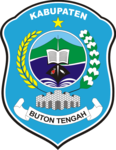 Central Buton Regency
Central Buton Regency
-
 North Buton Regency
North Buton Regency
-
 South Buton Regency
South Buton Regency
-
 Kolaka Regency
Kolaka Regency
-
 East Kolaka Regency
East Kolaka Regency
-
 North Kolaka Regency
North Kolaka Regency
-
 Konawe Regency
Konawe Regency
-
 Konawe Islands Regency
Konawe Islands Regency
-
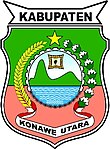 North Konawe Regency
North Konawe Regency
-
 South Konawe Regency
South Konawe Regency
-
 Muna Regency
Muna Regency
-
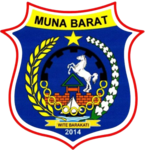 West Muna Regency
West Muna Regency
-
 Wakatobi Regency
Wakatobi Regency
-
 Baubau City
Baubau City
-
 Kendari City
Kendari City
Central Sulawesi
See also: Central Sulawesi-
 Banggai Regency
Banggai Regency
-
 Banggai Islands Regency
Banggai Islands Regency
-
 Banggai Laut Regency
Banggai Laut Regency
-
 Buol Regency
Buol Regency
-
 Donggala Regency
Donggala Regency
-
 Morowali Regency
Morowali Regency
-
 North Morowali Regency
North Morowali Regency
-
 Parigi Moutong Regency
Parigi Moutong Regency
-
 Poso Regency
Poso Regency
-
 Sigi Regency
Sigi Regency
-
 Tojo Una-Una Regency
Tojo Una-Una Regency
-
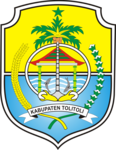 Tolitoli Regency
Tolitoli Regency
-
 Palu City
Palu City
Gorontalo
See also: Gorontalo-
 Boalemo Regency
Boalemo Regency
-
 Bone Bolango Regency
Bone Bolango Regency
-
 Gorontalo Regency
Gorontalo Regency
-
 North Gorontalo Regency
North Gorontalo Regency
-
 Pohuwato Regency
Pohuwato Regency
-
 Gorontalo City
Gorontalo City
North Sulawesi
See also: North Sulawesi-
 Bolaang Mongondow (Bolmong) Regency
Bolaang Mongondow (Bolmong) Regency
-
 East Bolaang Mongondow Regency
East Bolaang Mongondow Regency
-
 North Bolaang Mongondow Regency
North Bolaang Mongondow Regency
-
 South Bolaang Mongondow Regency
South Bolaang Mongondow Regency
-
 Minahasa Regency
Minahasa Regency
-
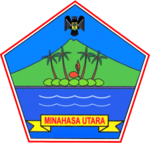 North Minahasa Regency
North Minahasa Regency
-
 South Minahasa Regency
South Minahasa Regency
-
 Southeast Minahasa Regency
Southeast Minahasa Regency
-
 Sangihe Islands Regency
Sangihe Islands Regency
-
 Siau Tagulandang Biaro (Sitaro) Islands Regency
Siau Tagulandang Biaro (Sitaro) Islands Regency
-
 Talaud Islands Regency
Talaud Islands Regency
-
 Bitung City
Bitung City
-
 Kotamobagu City
Kotamobagu City
-
 Manado City
Manado City
-
 Tomohon City
Tomohon City
Maluku
See also: Maluku (province)-
 Aru Islands Regency
Aru Islands Regency
-
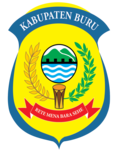 Buru Regency
Buru Regency
-
 South Buru Regency
South Buru Regency
-
 Central Maluku Regency
Central Maluku Regency
-
 Southeast Maluku Regency
Southeast Maluku Regency
-
 Southwest Maluku Regency
Southwest Maluku Regency
-
 East Seram Regency
East Seram Regency
-
 West Seram Regency
West Seram Regency
-
 Tanimbar Islands Regency
Tanimbar Islands Regency
-
 Ambon City
Ambon City
-
 Tual City
Tual City
North Maluku
See also: North Maluku-
 Central Halmahera Regency
Central Halmahera Regency
-
 East Halmahera Regency
East Halmahera Regency
-
 North Halmahera Regency
North Halmahera Regency
-
 South Halmahera Regency
South Halmahera Regency
-
 West Halmahera Regency
West Halmahera Regency
-
 Morotai Island Regency
Morotai Island Regency
-
 Sula Islands Regency
Sula Islands Regency
-
 Taliabu Island Regency
Taliabu Island Regency
-
 Ternate City
Ternate City
-
 Tidore Islands City
Tidore Islands City
Southwest Papua
See also: Southwest PapuaWest Papua
See also: West Papua (province)-
 Arfak Mountains Regency
Arfak Mountains Regency
-
 Fakfak Regency
Fakfak Regency
-
 Kaimana Regency
Kaimana Regency
-
 Manokwari Regency
Manokwari Regency
-
 South Manokwari Regency
South Manokwari Regency
-
 Teluk Bintuni Regency
Teluk Bintuni Regency
-
 Teluk Wondama Regency
Teluk Wondama Regency
Central Papua
See also: Central Papua-
 Deiyai Regency
Deiyai Regency
-
 Dogiyai Regency
Dogiyai Regency
-
 Intan Jaya Regency
Intan Jaya Regency
-
 Mimika Regency
Mimika Regency
-
 Nabire Regency
Nabire Regency
-
 Paniai Regency
Paniai Regency
-
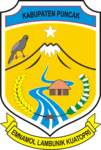 Puncak Regency
Puncak Regency
-
 Puncak Jaya Regency
Puncak Jaya Regency
South Papua
See also: South PapuaHighland Papua
See also: Highland Papua-
 Bintang Mountains Regency
Bintang Mountains Regency
-
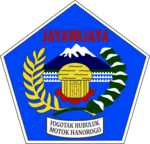 Jayawijaya Regency
Jayawijaya Regency
-
 Lanny Jaya Regency
Lanny Jaya Regency
-
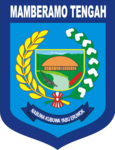 Central Mamberamo Regency
Central Mamberamo Regency
-
 Nduga Regency
Nduga Regency
-
 Tolikara Regency
Tolikara Regency
-
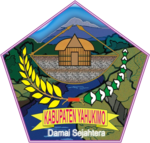 Yahukimo Regency
Yahukimo Regency
-
 Yalimo Regency
Yalimo Regency
Papua
See also: Papua (province)-
 Biak Numfor Regency
Biak Numfor Regency
-
 Jayapura Regency
Jayapura Regency
-
 Keerom Regency
Keerom Regency
-
 Mamberamo Raya Regency
Mamberamo Raya Regency
-
 Sarmi Regency
Sarmi Regency
-
 Supiori Regency
Supiori Regency
-
 Waropen Regency
Waropen Regency
-
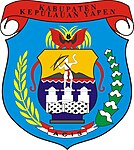 Yapen Islands Regency
Yapen Islands Regency
-
 Jayapura City
Jayapura City
Historical
National
-
 Emblem of East Indies (Indonesia) during VOC rule (1602–1799)
Emblem of East Indies (Indonesia) during VOC rule (1602–1799)
-
 Coat of arms of Dutch East Indies (1800–1945)
Coat of arms of Dutch East Indies (1800–1945)
-
 Proposed first design of the coat of arms of United States of Indonesia (1949–1950)
Proposed first design of the coat of arms of United States of Indonesia (1949–1950)
-
 Proposed second design of the coat of arms of United States of Indonesia (1949–1950)
Proposed second design of the coat of arms of United States of Indonesia (1949–1950)
-
 Proposed third design of the coat of arms of United States of Indonesia (1949–1950)
Proposed third design of the coat of arms of United States of Indonesia (1949–1950)
-
 One of the early design of the coat of arms of United States of Indonesia after third proposal, deemed too mythical by Masyumi (1949–1950)
One of the early design of the coat of arms of United States of Indonesia after third proposal, deemed too mythical by Masyumi (1949–1950)
-
 Prototype of the present national coat of arms, deemed to similar to the United States bald eagle (1950)
Prototype of the present national coat of arms, deemed to similar to the United States bald eagle (1950)
Kingdom and Sultanate
-
 The Surya Majapahit, the emblem of the Majapahit Empire (1293–1527). The empire was dissolved in 1527 after being defeated by the Demak Sultanate.
The Surya Majapahit, the emblem of the Majapahit Empire (1293–1527). The empire was dissolved in 1527 after being defeated by the Demak Sultanate.
-
 Coat of arms of Yogyakarta Sultanate (since 1755), the only monarchy with political power in Indonesia.
Coat of arms of Yogyakarta Sultanate (since 1755), the only monarchy with political power in Indonesia.
-
 Emblem of Surakarta Sunanate (since 1745). Its political power was taken by the government in 1946 and the territory merged into Central Java. But it still exists as a protector of Javanese culture
Emblem of Surakarta Sunanate (since 1745). Its political power was taken by the government in 1946 and the territory merged into Central Java. But it still exists as a protector of Javanese culture
-
 Coat of arms of the Pakualaman, a monarchy within the greater Yogyakarta Sultanate
Coat of arms of the Pakualaman, a monarchy within the greater Yogyakarta Sultanate
-
 Coat of arms of the Riau-Lingga Sultanate (1824-1911). The sultanate was occupied, then abolished by the Dutch in 1911 and its territory were directly annexed into the Dutch East Indies.
Coat of arms of the Riau-Lingga Sultanate (1824-1911). The sultanate was occupied, then abolished by the Dutch in 1911 and its territory were directly annexed into the Dutch East Indies.
-
 Coat of arms of the Deli Sultanate (1632-1946). Its political power was taken by the government in 1946 and the territory merged into North Sumatra.
Coat of arms of the Deli Sultanate (1632-1946). Its political power was taken by the government in 1946 and the territory merged into North Sumatra.
-
 Coat of arms of the Pontianak Sultanate (1771-1950). Its political power was taken by the government in 1959 and the territory merged into West Kalimantan.
Coat of arms of the Pontianak Sultanate (1771-1950). Its political power was taken by the government in 1959 and the territory merged into West Kalimantan.
-
 Emblem of the Banten Sultanate (1527–1813). The sultanate was defeated and abolished by the Dutch authority in 1813 while its remaining territory was annexed into the Dutch East Indies.
Emblem of the Banten Sultanate (1527–1813). The sultanate was defeated and abolished by the Dutch authority in 1813 while its remaining territory was annexed into the Dutch East Indies.
-
 Royal seal of Sultan Tangkal Alam of the Pagaruyung Kingdom (1347–1833). The kingdom was defeated and abolished by the Dutch in 1833 after the Padri War while its remaining territory was annexed into the Dutch East Indies.
Royal seal of Sultan Tangkal Alam of the Pagaruyung Kingdom (1347–1833). The kingdom was defeated and abolished by the Dutch in 1833 after the Padri War while its remaining territory was annexed into the Dutch East Indies.
-
 Emblem of the Lanfang Republic (1777–1884), a tributary state of the Qing Dynasty established in West Kalimantan, which was then occupied and dissolved by the Dutch in 1884.
Emblem of the Lanfang Republic (1777–1884), a tributary state of the Qing Dynasty established in West Kalimantan, which was then occupied and dissolved by the Dutch in 1884.
Subdivisions
States
-
 Coat of arms of the former State of East Indonesia (1946–1950).
Coat of arms of the former State of East Indonesia (1946–1950).
-
 Coat of arms of the former State of East Indonesia (1946–1950) with escutcheon.
Coat of arms of the former State of East Indonesia (1946–1950) with escutcheon.
-
 Coat of arms of the former State of East Sumatra (1947–1950)
Coat of arms of the former State of East Sumatra (1947–1950)
-
 Coat of arms of the former State of Pasundan (1948–1950).
Coat of arms of the former State of Pasundan (1948–1950).
Provinces
-
 Emblem of the former province of East Timor (1976–1999), now the independent state of East Timor.
Emblem of the former province of East Timor (1976–1999), now the independent state of East Timor.
-
 Emblem of the former Municipality of Greater Jakarta (1951–1960) and the first emblem of Special Capital Region of Jakarta (1960–1963).
Emblem of the former Municipality of Greater Jakarta (1951–1960) and the first emblem of Special Capital Region of Jakarta (1960–1963).
-
 Former emblem of Special Capital Region of Jakarta (1963–1964). The motto was written in Republican Spelling System, which in current version was replaced by the Indonesian Spelling System from 1964 onwards.
Former emblem of Special Capital Region of Jakarta (1963–1964). The motto was written in Republican Spelling System, which in current version was replaced by the Indonesian Spelling System from 1964 onwards.
-
 Former emblem of North Kalimantan (2014–2021) as per North Kalimantan Governor Regulation No. 4/2014.
Former emblem of North Kalimantan (2014–2021) as per North Kalimantan Governor Regulation No. 4/2014.
-
 Former emblem of the then Irian Jaya (1963–2002), now Papua.
Former emblem of the then Irian Jaya (1963–2002), now Papua.
-
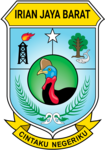 Former emblem of the then West Irian Jaya (1999–2007), now West Papua.
Former emblem of the then West Irian Jaya (1999–2007), now West Papua.
-
 Emblem of Southwest Papua Presidium, organization that supported the new province creation.
Emblem of Southwest Papua Presidium, organization that supported the new province creation.
-
 Emblem of Highland Papua Secretariat, organization that supported the new province creation.
Emblem of Highland Papua Secretariat, organization that supported the new province creation.
Colonial era
-
 Coat of Arms of Ambon during Dutch colonization.
Coat of Arms of Ambon during Dutch colonization.
-
 Coat of Arms of Bandung during Dutch colonization.
Coat of Arms of Bandung during Dutch colonization.
-
 Coat of Arms of Batavia during Dutch colonization, now called Jakarta.
Coat of Arms of Batavia during Dutch colonization, now called Jakarta.
-
 Coat of Arms of Buitenzorg during Dutch colonization, now called Bogor.
Coat of Arms of Buitenzorg during Dutch colonization, now called Bogor.
-
 Coat of Arms of Cheribon during Dutch colonization, now called Cirebon.
Coat of Arms of Cheribon during Dutch colonization, now called Cirebon.
-
 Coat of Arms of Garut during Dutch colonization.
Coat of Arms of Garut during Dutch colonization.
-
 Coat of Arms of Magelang during Dutch colonization.
Coat of Arms of Magelang during Dutch colonization.
-
 Coat of Arms of Makassar during Dutch colonization.
Coat of Arms of Makassar during Dutch colonization.
-
 Coat of Arms of Malang during Dutch colonization.
Coat of Arms of Malang during Dutch colonization.
-
 Coat of Arms of Manado during Dutch colonization.
Coat of Arms of Manado during Dutch colonization.
-
 Coat of Arms of Medan during Dutch colonization.
Coat of Arms of Medan during Dutch colonization.
-
 Coat of Arms of Oosthaven during Dutch colonization, now called Bandar Lampung.
Coat of Arms of Oosthaven during Dutch colonization, now called Bandar Lampung.
-
 Coat of Arms of Padang during Dutch colonization.
Coat of Arms of Padang during Dutch colonization.
-
 Coat of Arms of Palembang during Dutch colonization.
Coat of Arms of Palembang during Dutch colonization.
-
 Coat of Arms of Pekalongan during Dutch colonization.
Coat of Arms of Pekalongan during Dutch colonization.
-
 Coat of Arms of Semarang during Dutch colonization.
Coat of Arms of Semarang during Dutch colonization.
-
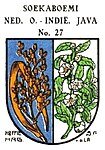 Coat of Arms of Sukabumi during Dutch colonization.
Coat of Arms of Sukabumi during Dutch colonization.
-
 Coat of Arms of Surabaya during Dutch colonization.
Coat of Arms of Surabaya during Dutch colonization.
-
 Coat of Arms of Madiun during Dutch colonization.
Coat of Arms of Madiun during Dutch colonization.
-
 Coat of Arms of Pontianak during Dutch colonization.
Coat of Arms of Pontianak during Dutch colonization.
Cities and regencies
-
 Former emblem of Toba Samosir Regency. The regency was renamed into Toba Regency as of 2020 which affects the use of the former Emblem.
Former emblem of Toba Samosir Regency. The regency was renamed into Toba Regency as of 2020 which affects the use of the former Emblem.
-
 Former emblem of Pasaman Regency (1981–2012). With the creation of new West Pasaman Regency from its territory this logo was deemed not reflecting the current reality and replaced.
Former emblem of Pasaman Regency (1981–2012). With the creation of new West Pasaman Regency from its territory this logo was deemed not reflecting the current reality and replaced.
-
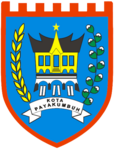 Former emblem of Payakumbuh City (1972–2012). With the addition of more nagaris into its territory, this logo was deemed not reflecting the current reality and replaced.
Former emblem of Payakumbuh City (1972–2012). With the addition of more nagaris into its territory, this logo was deemed not reflecting the current reality and replaced.
-
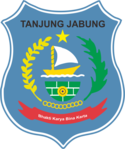 Emblem of former Tanjung Jabung Regency, now split into West Tanjung Jabung Regency and East Tanjung Jabung Regency since 1999.
Emblem of former Tanjung Jabung Regency, now split into West Tanjung Jabung Regency and East Tanjung Jabung Regency since 1999.
-
 Former logo of Penukal Abab Lematang Ilir Regency (2012–2016), rice and cotton not yet added.
Former logo of Penukal Abab Lematang Ilir Regency (2012–2016), rice and cotton not yet added.
-
 Former emblem of Pangkal Pinang City
Former emblem of Pangkal Pinang City
-
 Former emblem of Central Lampung Regency
Former emblem of Central Lampung Regency
-
 Former emblem of South Lampung Regency (1981–2011), this logo was deemed not reflecting the current reality and replaced in 2011.
Former emblem of South Lampung Regency (1981–2011), this logo was deemed not reflecting the current reality and replaced in 2011.
-
 Former emblem of West Lampung Regency, with the creation of Pesisir Barat Regency from its territory, this logo was deemed not reflecting the current reality and replaced in 2015.
Former emblem of West Lampung Regency, with the creation of Pesisir Barat Regency from its territory, this logo was deemed not reflecting the current reality and replaced in 2015.
-
 Former emblem of Mesuji Regency (2011–2017).
Former emblem of Mesuji Regency (2011–2017).
-
 Former emblem of Bandar Lampung
Former emblem of Bandar Lampung
-
 Former emblem of Banjarnegara Regency (1967–2022)
Former emblem of Banjarnegara Regency (1967–2022)
-
 Former emblem of Kendal Regency (1967–2011) replaced because it deemed not reflecting the current reality.
Former emblem of Kendal Regency (1967–2011) replaced because it deemed not reflecting the current reality.
-
 Former logo of Pekalongan City used from 2014, deemed too abstract and after negative response the logo was reverted in 2017 to a 1958 coat-of-arms.
Former logo of Pekalongan City used from 2014, deemed too abstract and after negative response the logo was reverted in 2017 to a 1958 coat-of-arms.
-
 A variant of old and incorrect (albeit used officially) emblem of Dompu Regency.
A variant of old and incorrect (albeit used officially) emblem of Dompu Regency.
-
 Emblem of the former Pontianak Regency (1963–2014). To prevent confusion with Pontianak City this regency was renamed to Mempawah Regency.
Emblem of the former Pontianak Regency (1963–2014). To prevent confusion with Pontianak City this regency was renamed to Mempawah Regency.
-
 Emblem of Kutai Regency, now called Kutai Kartanegara Regency and has a new Emblem
Emblem of Kutai Regency, now called Kutai Kartanegara Regency and has a new Emblem
-
 Former emblem of Mahakam Ulu Regency (2013–2019).
Former emblem of Mahakam Ulu Regency (2013–2019).
-
 Emblem of North Mamuju Regency, renamed to Pasangkayu Regency in 2018
Emblem of North Mamuju Regency, renamed to Pasangkayu Regency in 2018
-
 Former emblem of East Kolaka Regency (2013–2022).
Former emblem of East Kolaka Regency (2013–2022).
-
 Former emblem of Muna Regency (2002–2012). With the creation of new West Muna Regency and North Buton Regency this logo was deemed not reflecting the current reality and replaced.
Former emblem of Muna Regency (2002–2012). With the creation of new West Muna Regency and North Buton Regency this logo was deemed not reflecting the current reality and replaced.
-
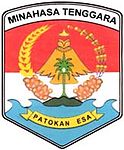 First emblem of Southeast Minahasa Regency (2007–2010).
First emblem of Southeast Minahasa Regency (2007–2010).
-
 Second emblem of Southeast Minahasa Regency (2010-2014). This emblem was negatively received because of lack of "Manguni" (Owl), faunal identity used by Minahasan people.
Second emblem of Southeast Minahasa Regency (2010-2014). This emblem was negatively received because of lack of "Manguni" (Owl), faunal identity used by Minahasan people.
-
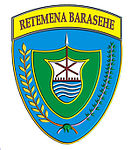 Former emblem of Buru Regency.
Former emblem of Buru Regency.
-
 Emblem of Tanimbar Islands Regency used until 2019, this regency was formerly known as Western Southeast Maluku Regency.
Emblem of Tanimbar Islands Regency used until 2019, this regency was formerly known as Western Southeast Maluku Regency.
-
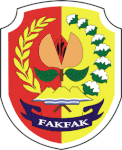 Former emblem of Fakfak Regency (1975–2008). By the suggestion of traditional leaders, the nutmeg fruit are reversed.
Former emblem of Fakfak Regency (1975–2008). By the suggestion of traditional leaders, the nutmeg fruit are reversed.
-
 Former emblem of Jayawijaya Regency.
Former emblem of Jayawijaya Regency.
References
- "Diskominfo dan Sandi Aceh - Arti Lambang Provinsi Aceh". diskominfo.acehprov.go.id.
- "Pemerintah Provinsi Sumatera Utara - Identitas Provinsi Sumatera Utara". www.sumutprov.go.id.
- "Arti Lambang Tuah Sakato". www.sumbarprov.go.id.
- "Pemerintah Provinsi Riau". www.riau.go.id.
- "Portal Kepriprov". www.kepriprov.go.id.
- "Pemerintah Provinsi Jambi - Profil Lambang Daerah". www.jambiprov.go.id. Archived from the original on 2018-11-09. Retrieved 2019-04-01.
- "Lambang Sumatera Selatan". sumselprov.go.id.
- "PEMERINTAH PROVINSI BENGKULU". bengkuluprov.go.id.
- "Pemerintah Provinsi Babel - Lambang Daerah dan Artinya". www.bantenprov.go.id.
- "Pemerintah Provinsi Lampung". www.lampungprov.go.id.
- "PERATURAN DAERAH PROPINSI LAMPUNG NOMOR 1 TAHUN 1971 TENTANG BENTUK LAMBANG DAERAH PROVINSI LAMPUNG - PDF Free Download".
- "Peraturan Daerah Propinsi Lampung Nomor 1 Tahun 1971 Tentang Bentuk Lambang Daerah Provinsi Lampung – Kerajaan Adat Sekala Brak, Gedung Dalom". Archived from the original on 2021-10-10. Retrieved 2021-10-10.
- "Pemerintah Provinsi Banten - Arti Lambang". www.bantenprov.go.id.
- "JAYA RAYA, LAMBANG JAKARTA". www.jakarta.go.id.
- "Lambang dan Motto Jawa Barat". www.jabarprov.go.id.
- "Pemerintah Provinsi Jawa Tengah". www.jatengprov.go.id.
- "LAMBANG DAERAH DAERAH ISTIMEWA YOGYAKARTA". www.jogjaprov.go.id.
- "Lambang Jawa Timur". www.jatimprov.go.id.
- "DISTANTP Bali - Selayang Pandang". distantp.baliprov.go.id.
- "Pemerintah Provinsi NTB - Makna Lambang Daerah". www.ntbprov.go.id.
- "Pemerintah Provinsi NTT - Arti Lambang Daerah Provinsi NTT". www.nttprov.go.id/ntt.
- "Peraturan Daerah Tingkat Ke-I Kalimantan Barat No.4 Tahun 1964" (PDF). jdih.kalbarprov.go.id.
- "Peraturan Daerah I Kalimantan Tengah No.5 Tahun 1985" (PDF). jdih.kalteng.go.id.
- "Pemerintah Provinsi Kalimantan Selatan". www.kalselprov.go.id. Archived from the original on 2019-04-06. Retrieved 2020-06-20.
- "Pemerintah Provinsi Kalimantan Timur - Lambang". www.kaltimprov.go.id.
- "Peraturan Gubernur Kalimantan Utara Nomor 4 Tahun 2014". www.kaltaraprov.go.id.
- "Peraturan Daerah Sulawesi Barat Nomor 8 Tahun 2006" (PDF). jdih.setjen.kemendagri.go.id. Archived from the original (PDF) on 2019-04-08. Retrieved 2019-04-08.
- "Peraturan Daerah Sulawesi Selatan Nomor 2 Tahun 1972". bappeda.sulselprov.go.id. Archived from the original on 2019-11-10. Retrieved 2020-06-20.
- "Pemerintah Provinsi Sulawesi Tenggara". www.sultraprov.go.id.
- "Pemerintah Provinsi Sulawesi Tengah - Arti Lambang". www.sultengprov.go.id.
- "Sosok Dibalik Logo Provinsi Gorontalo". www.gorontaloprov.go.id.
- "Arti Lambang Gorontalo Kota". www.gorontalokota.go.id. Archived from the original on 2020-09-20. Retrieved 2019-04-11.
- "Pemerintah Provinsi Sulawesi Utara - Arti Lambang". www.sulutprov.go.id. Archived from the original on 2017-11-03.
- "Pemerintah Provinsi Maluku - Arti Lambang". www.malukuprov.go.id.
- "Pemerintah Provinsi Maluku Utara". www.malutprov.go.id.
- Putriyana, Eka (27 April 2023). "Pemprov Papua Barat Daya Launching Lambang Daerah, Ini Makna dan Filosofinya". rri.go.id (in Indonesian). Retrieved 21 July 2023.
- "Pemerintah Provinsi Papua Barat". www.papuabaratprov.go.id. Archived from the original on 2010-06-02. Retrieved 2020-06-20.
- Central Papua Government's Draft of Regulation http://eperda.kemendagri.go.id/dokumen_data_dukung/bB6q5B610L/bB6q5B610L_surat_sk_uL5TYgzC3M.pdf
- "Lambang Provinsi Papua Selatan Sarat Makna". sorongnews.com. 2023-04-28. Retrieved 2023-04-28.
- Leloltery, Ardiles (9 May 2023). "Penjabat Gubernur: Logo Pemprov Papua Pegunungan berlandaskan lima butir Pancasila". papua.antaranews.com (in Indonesian). Retrieved 21 November 2023.
- "Pemerintah Provinsi Papua - Arti Lambang Papua". www.papua.go.id.
- "Peraturan Gubernur (PERGUB) Provinsi Kalimantan Utara No. 4 Tahun 2014". peraturan.bpk.go.id.
- "Provinsi Papua Barat Daya Disahkan, Ketua Presidium Pembentukan Berterima Terima Kasih ke Jokowi dan Puan". Rmol.id. 2022-11-18. Retrieved 2024-08-05.
- "Kantor Sekretariat Pusat Informasi Provinsi Papua Pegunungan". KawatTimur.ID. 2022-07-22. Retrieved 2024-08-05.
- "InfoPublik - Pemkab Toba Sosialisasikan Logo Baru". infopublik.id (in Indonesian). Retrieved 2022-11-23.
- "Perda Kabupaten Pasaman No. 4 Tahun 2012" (PDF). jdih.setjen.kemendagri.go.id. Archived from the original (PDF) on 2014-03-26. Retrieved 2019-04-06.
- "Beda Logo Baru Payakumbuh dengan Logo Lama, Ini Maknanya". padangkita.com (in Indonesian). 1 November 2020. Retrieved 14 August 2023.
- Profil Daerah Kabupaten dan Kota (1 ed.). Penerbit Kompas. 2001.
- "Lambang Kabupaten PALI Ditambah Padi dan Kapas". koransn.com.
- "Peraturan Daerah Lampung Selatan No.23 tahun 2011 Tentang Bentuk, Warna dan Isi Lambang Daerah Kabupaten Lampung Selatan". www.lampungselatankab.go.id. Pemerintah Lampung Selatan. Archived from the original on 2019-04-06. Retrieved 2019-04-06.
- "Logo Lampung Barat Yang Baru Resmi Dipakai". www.polpplampungbarat.com. Satpol PP Lampung Barat.
- "Lambang Kabupaten Mesuji Lampung Berubah Bentuk dan Semboyan". lampungpro.co (in Indonesian). 27 July 2017. Retrieved 23 May 2023.
- "Perda Kabupaten Kendal No. 21 Tahun 2011" (PDF). jdih.setjen.kemendagri.go.id. Archived from the original (PDF) on 2019-07-13. Retrieved 2019-04-06.
- "Peraturan Daerah Kota Pekalongan No.3 Tahun 2017" (PDF). www.jdih.setjen.kemendagri.go.id. Archived from the original (PDF) on 2019-04-06. Retrieved 2019-04-06.
- "Logo Baru Kabupaten Dompu Ternyata Sesuai dengan Perda No 14 Tahun 1970". klikpendidikan.id (in Indonesian). 14 February 2023. Retrieved 14 August 2023.
- "Siap Umumkan Nama Baru Daerah". www.mempawahkab.go.id. Archived from the original on 2019-04-04. Retrieved 2019-04-03.
- "Lambang Dan Logo Mahulu Berubah, Banyak Yang Tidak Setuju". beritamahulu.com (in Indonesian). 5 December 2019. Retrieved 21 July 2023.
- "Koltim Ubah Hari Jadi dan Lambang Daerah". triaspolitika.id (in Indonesian). 14 December 2022. Retrieved 23 May 2023.
- "Perda Kabupaten Muna No. 2 Tahun 2012" (PDF). jdih.setjen.kemendagri.go.id. Archived from the original (PDF) on 2019-04-06. Retrieved 2019-04-06.
- "Simbol Manguni Dominasi Lambang Baru Mitra". Tribun News.
- "Simbol Manguni Dominasi Lambang Baru Mitra". Tribun News.
- "Perubahan Atas Perda Kabupaten Daerah Tingkat II Fakfak Nomor 5 Tahun 1975". jdih.setjen.kemendagri.go.id. Archived from the original on 2019-04-06. Retrieved 2019-04-06.
| Indonesia articles | |||||||||
|---|---|---|---|---|---|---|---|---|---|
| History |
| ||||||||
| Geography | |||||||||
| Politics | |||||||||
| Economy | |||||||||
| Society |
| ||||||||

















